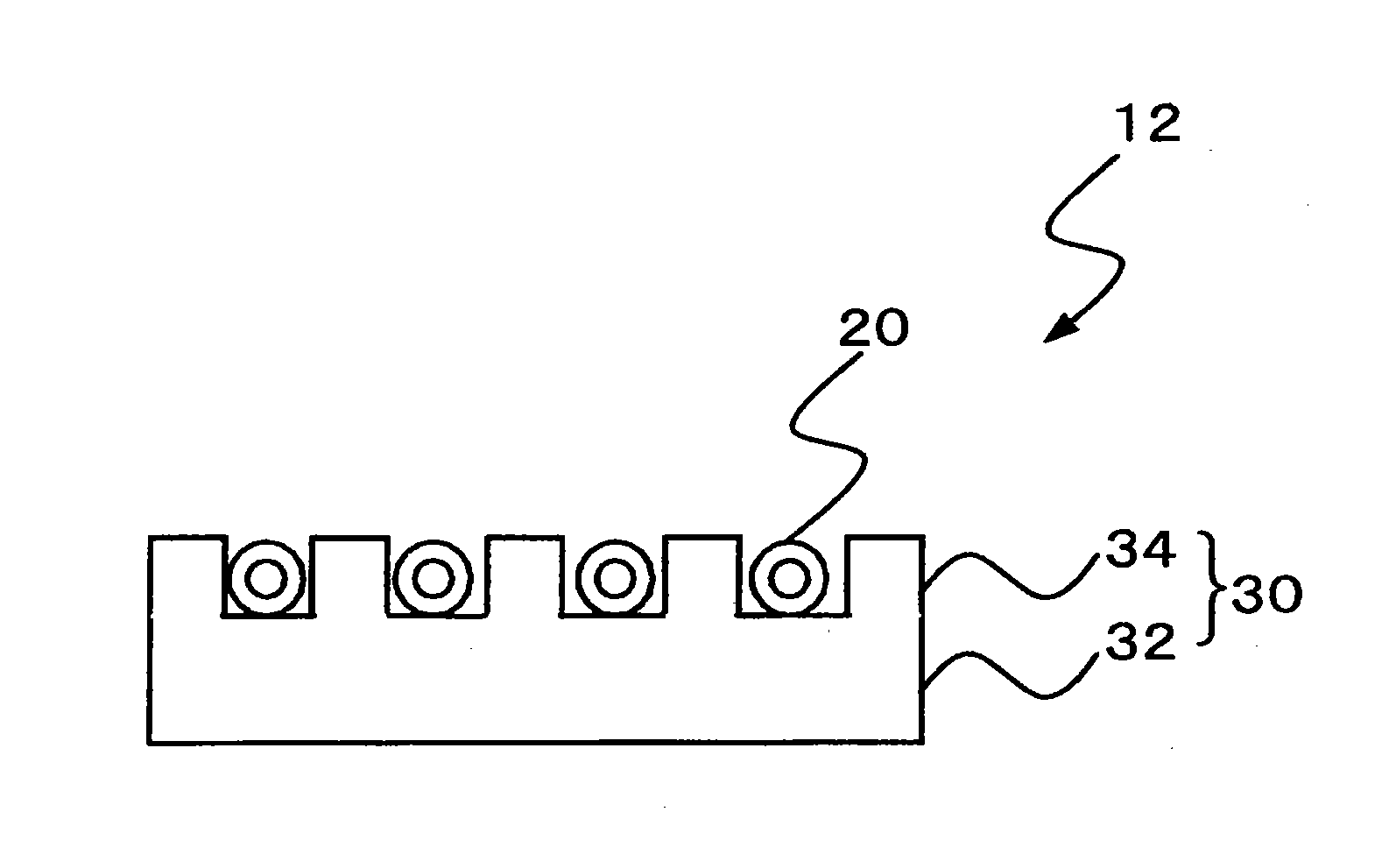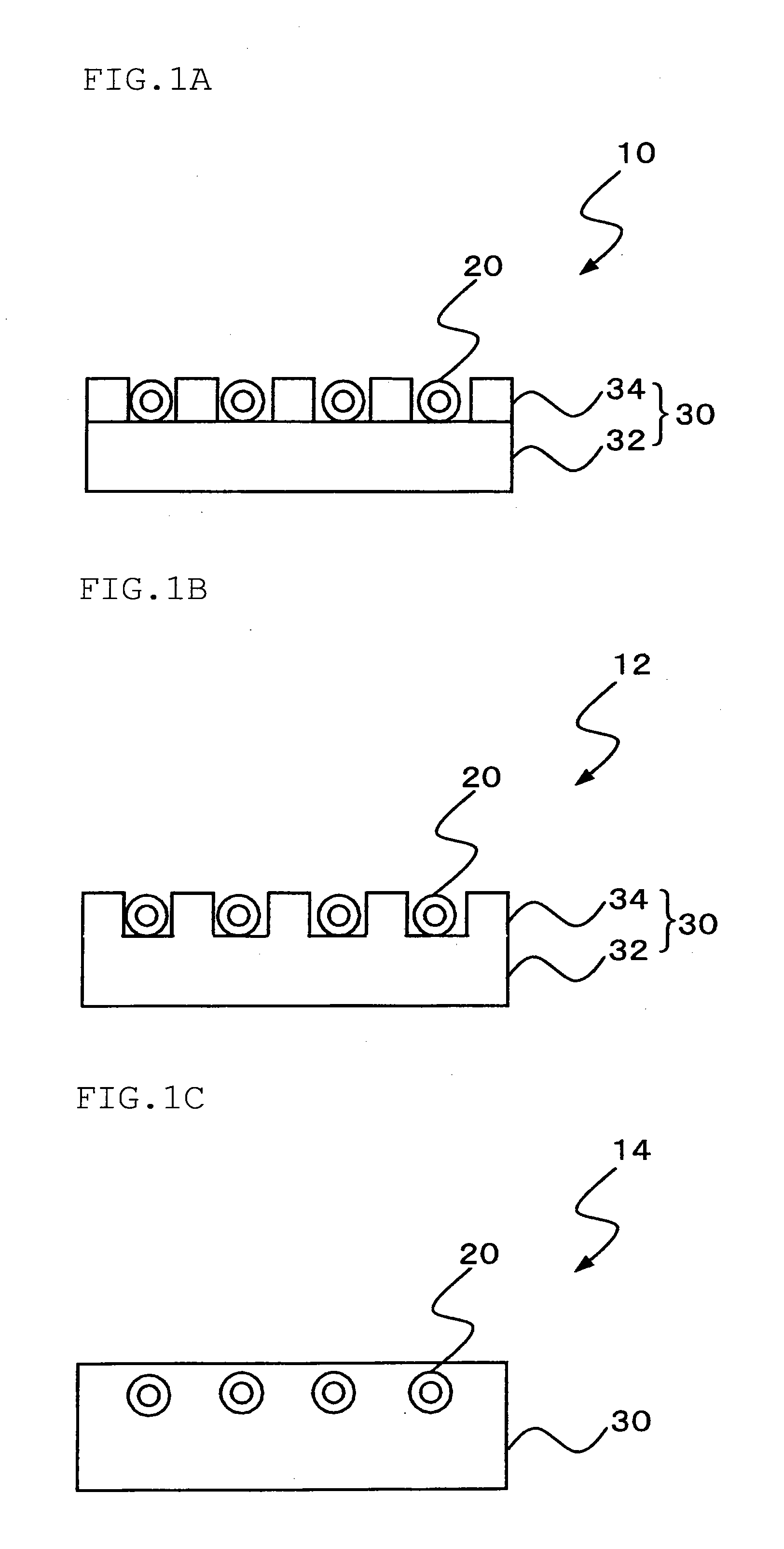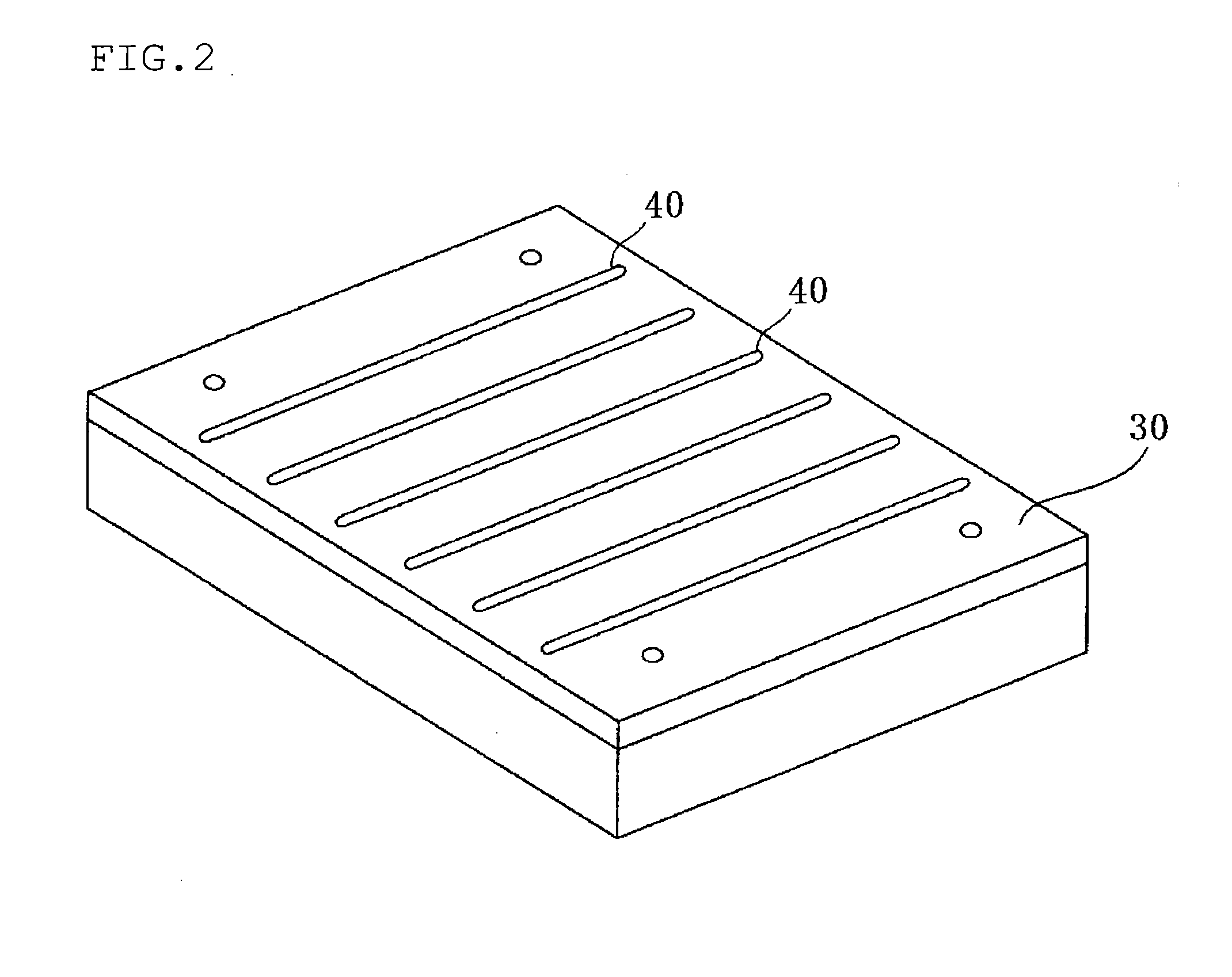Heating device
- Summary
- Abstract
- Description
- Claims
- Application Information
AI Technical Summary
Benefits of technology
Problems solved by technology
Method used
Image
Examples
production example 2
Production of a Board (Heat-Insulating Member)
[0101]An organic board and an inorganic board were produced in the same manner as in Production Example 1, except that bio-soluble fibers B (SiO2 content: 76 mass %, CaO content: 4 mass %, MgO content: 18 mass % and Al2O3 content: 2 mass %) (dissolution ratio in physiological saline: 23.1%) were used instead of bio-soluble fibers A.
production example 3
Production of a Board (Heat-Insulating Member)
[0102]An organic board and an inorganic board were produced in the same manner as in Production Example 1, except that inorganic fibers C (SiO2 content: 47 mass %, and Al2O3 content: 52 mass %) (dissolution ratio in physiological saline: 0.1%) were used instead of bio-soluble fibers A.
treatment example 1
Hardening Treatment with Silica
[0103]The organic boards and the inorganic boards obtained in Production Examples 1 to 3 (density: 250 kg / m3) were treated (immersed for 1 to 10 seconds) with a hardening liquid formed of an alkaline colloidal silica (pH about 9, solvent: water), and the surfaces thereof were hardened and dried. The density was 300 kg / m3. After the hardening, the strength was increased. The hardness of the hardened organic and inorganic boards was measured by means of a durometer (Durometer Type C, manufactured by Kobunshi Keiki Co., Ltd.). The results are shown in Table 1.
[0104]The organic board and the inorganic board obtained in Production Example 1 were evaluated without conducting a hardening treatment. The hardness was measured by the same method as mentioned above. The results are shown in Table 1.
TABLE 1Fibers (A)Organic boardInorganic boardBeforeBeforehardeningAfter hardeninghardeningAfter hardeningHardness (°)50854075
PUM
| Property | Measurement | Unit |
|---|---|---|
| wt % | aaaaa | aaaaa |
| temperature | aaaaa | aaaaa |
| temperature | aaaaa | aaaaa |
Abstract
Description
Claims
Application Information
 Login to View More
Login to View More - R&D
- Intellectual Property
- Life Sciences
- Materials
- Tech Scout
- Unparalleled Data Quality
- Higher Quality Content
- 60% Fewer Hallucinations
Browse by: Latest US Patents, China's latest patents, Technical Efficacy Thesaurus, Application Domain, Technology Topic, Popular Technical Reports.
© 2025 PatSnap. All rights reserved.Legal|Privacy policy|Modern Slavery Act Transparency Statement|Sitemap|About US| Contact US: help@patsnap.com



